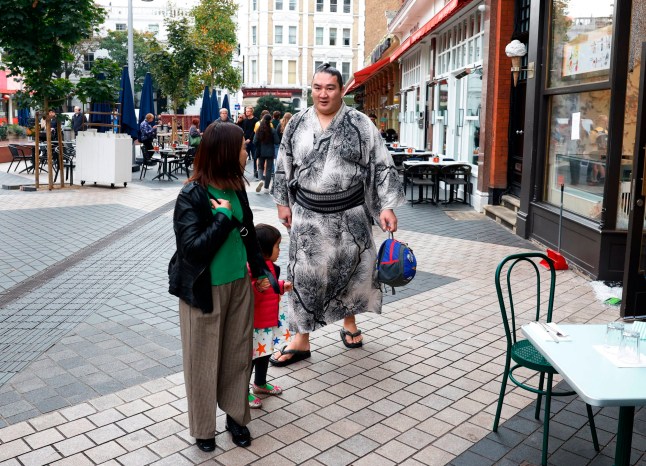Fans warned they could be squashed by fighters during the Grand Sumo Tournament

To view this video please enable JavaScript, and consider upgrading to a web
browser that
supports HTML5
video
Centuries of tradition, thunderous ceremony, and rare spectacle are about to converge on London as sumo wrestling returns to the UK for the first time in a generation.
Draped in embroidered silk robes and performing ancient rituals before each bout, these athletes will bring a sport steeped in Shinto tradition and Japanese heritage to the Royal Albert Hall.
But the health warning accompanying their arrival for the Grand Sumo Tournament is not about waistlines—it’s about the risks of sitting ringside, where spectators might find themselves at the heart of the action.
For British fans, it is an extraordinary opportunity. The last major tournament outside Japan took place at the same venue 34 years ago.
As is tradition, there will be no barriers between athletes and audience—a reminder that sumo is not just ancient, but immediate, its drama unfolding mere feet from the front row.
This has prompted a warning from the Royal Albert Hall to those in the front rows: ‘It is possible that wrestlers may fall or be thrown from the ring into the ringside area as part of the competition.’


The centrepiece of the hall will be the dohyō—a perfectly constructed mound of clay and sand, echoing the sacred sumo rings of Japan, where all the action will take place.
With all that salt and sand, spectators are also being told that food and drink is not allowed ringside, due to the risk of it being thrown from the ring as competitors fight it out to be crowned Yokozuna—the grand champion.
The wrestlers arrived in the UK over the weekend, ready for the competition on Wednesday night, when the arena will fall silent in respect for one of the many important rituals linked to sumo.
The tournament promises ancient rituals, extraordinary strength and rich tradition, including:
- Construction of the dohyō: a clay ring built afresh for each tournament, sometimes blessed by Shinto priests.
- Salt throwing: before each bout, wrestlers scatter salt to purify the ring and ward off evil, a nod to sumo’s spiritual origins.
- Ritual pose-offs: wrestlers face each other, crouch and often delay the actual grappling—a psychological contest known as shiritai.
- Yokozuna’s ring-entering ceremony (dohyō-iri): top-ranked wrestlers perform elaborate entrance rituals wearing special rope belts (tsuna), accompanied by attendants.
- Use of salt and sand: salt purifies, sand marks the boundaries—both are essential and symbolic.
Latest London news
- My stolen phone has been recovered – how can I get it back?
- ‘Unpleasant’ London flyover could be torn down and replaced with tunnel
- London used to excite me – now it sends me home early
To get the latest news from the capital visit Metro’s London news hub.

Sumo’s origins are deeply rooted in the Shinto religion. In ancient times, it was performed to entertain the deities.
Today, it is Japan’s national sport—the only country where it is practised professionally.
It is a huge honour for the Royal Albert Hall to be hosting such a high-profile event, seen as a moment of cultural exchange.
The venue was chosen as part of its centenary celebrations.
Speaking in 2024 when the date was announced, chief executive James Ainscough said: ‘Good things come to those who wait. The fact they’ve chosen to come back when they could have gone to any capital city around the world is quite an honour, particularly for us here at the Royal Albert Hall.’
For many, this will not just be a sporting event, but a chance to witness an ancient tradition, brought vividly to life on British soil – and the embodiment of the purpose of the building which exists for ‘people of all nations’.
Get in touch with our news team by emailing us at webnews@metro.co.uk.
For more stories like this, check our news page.





